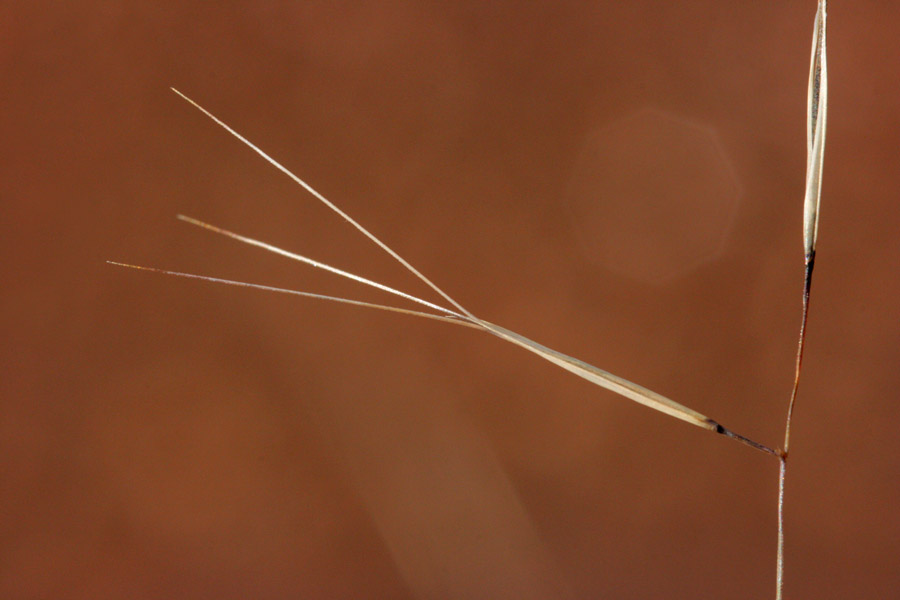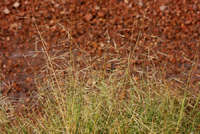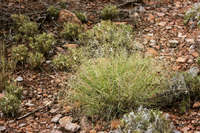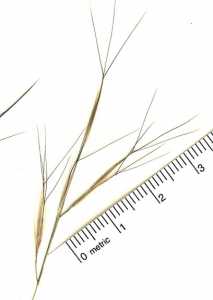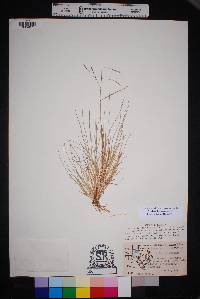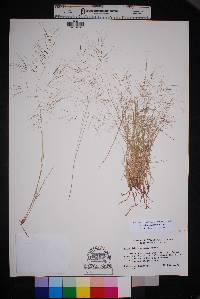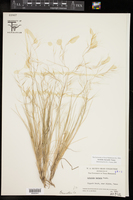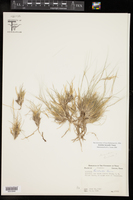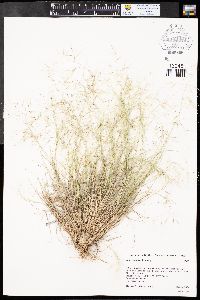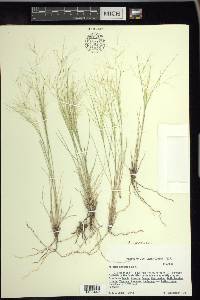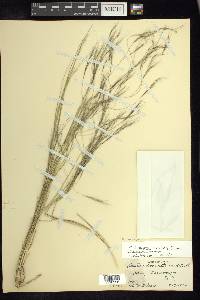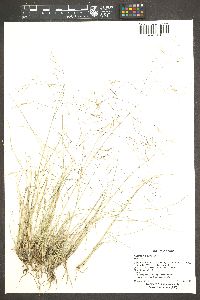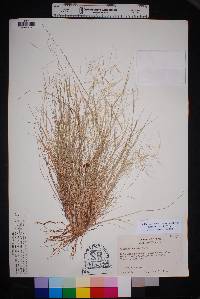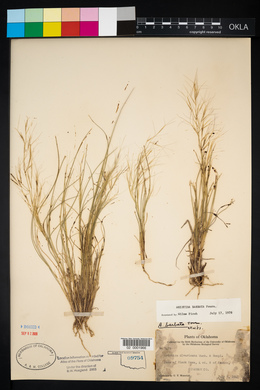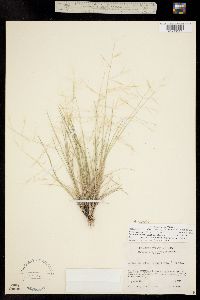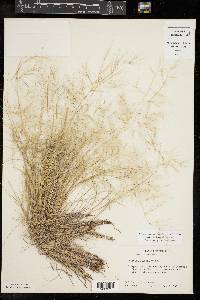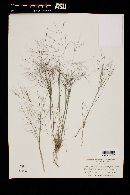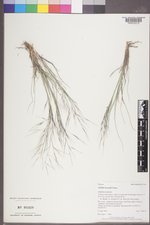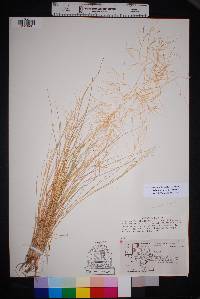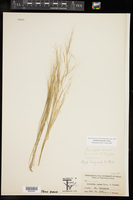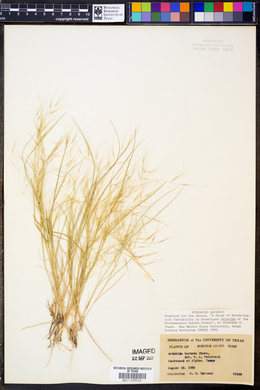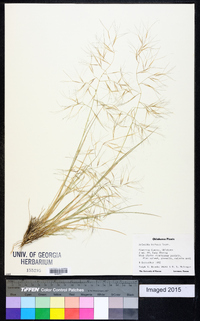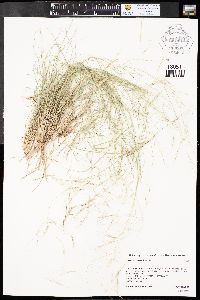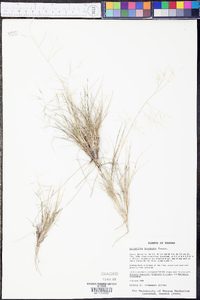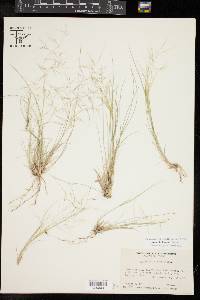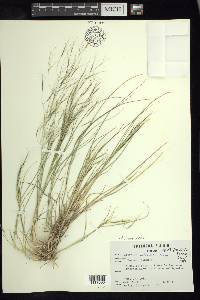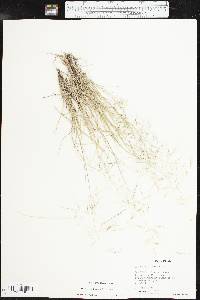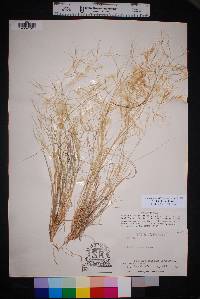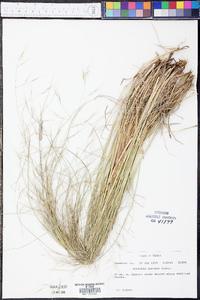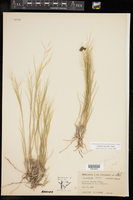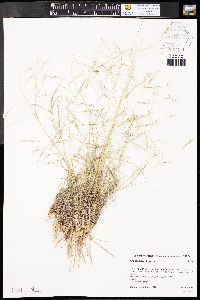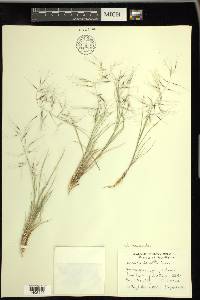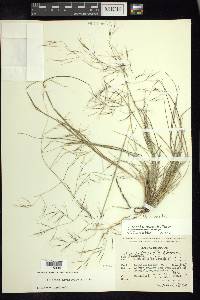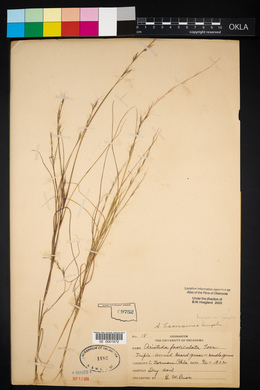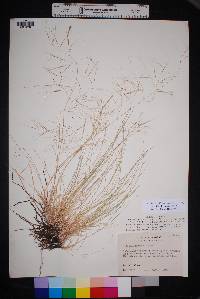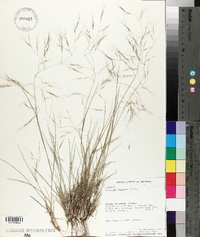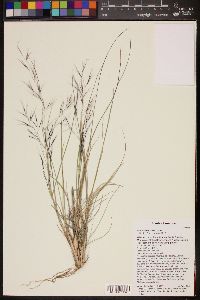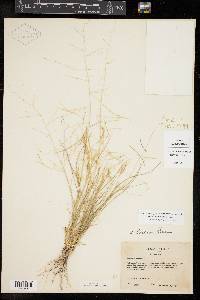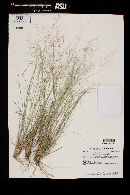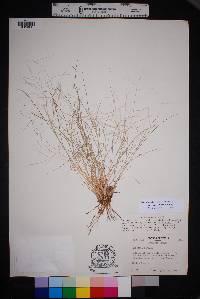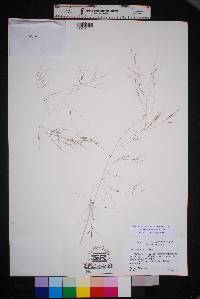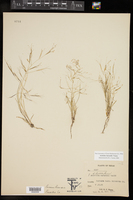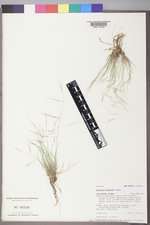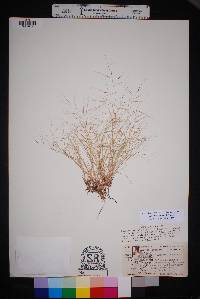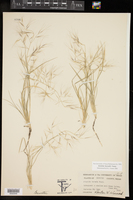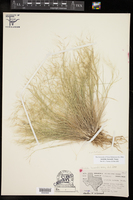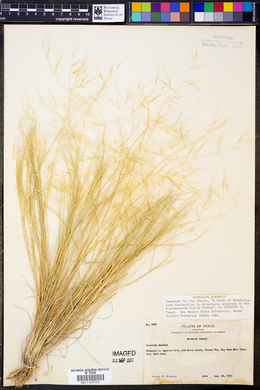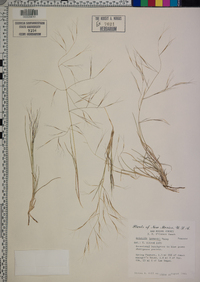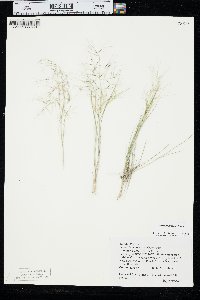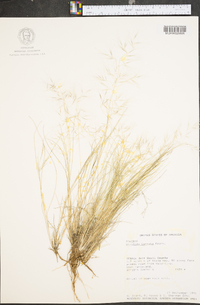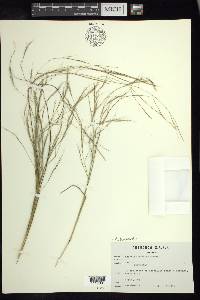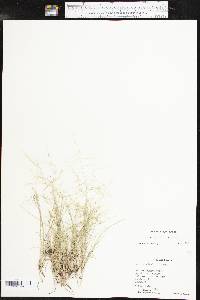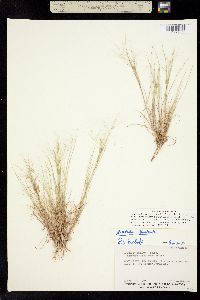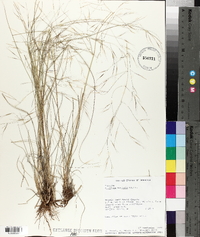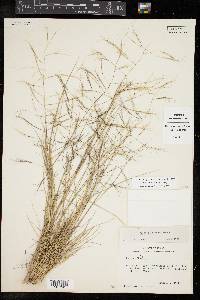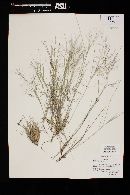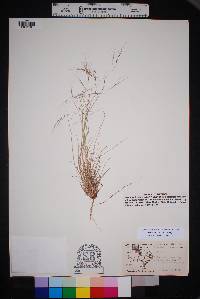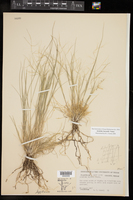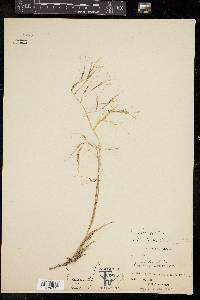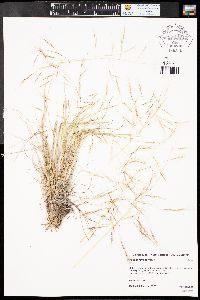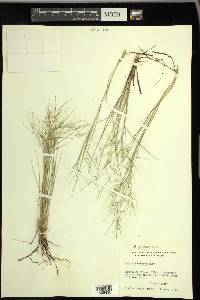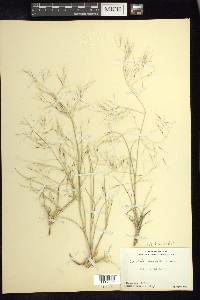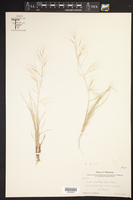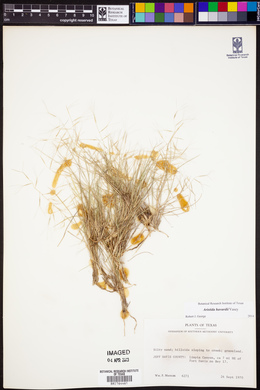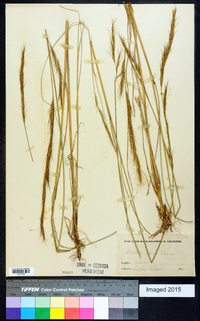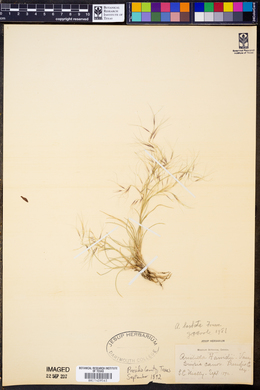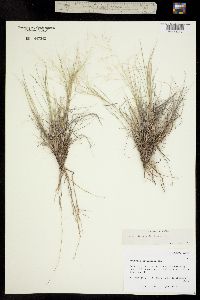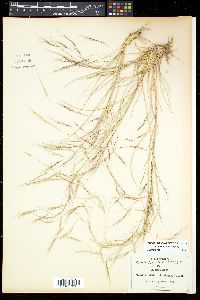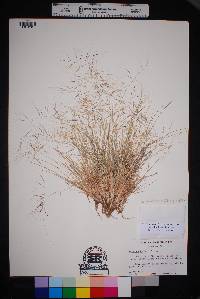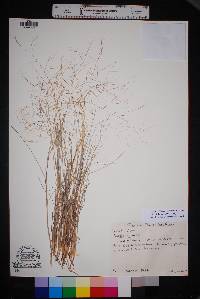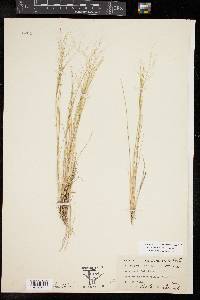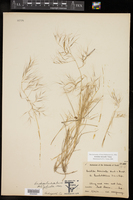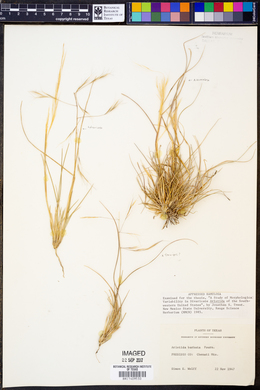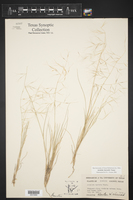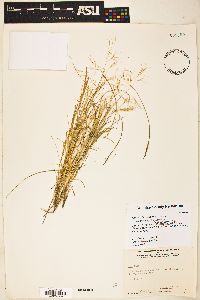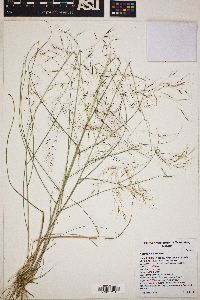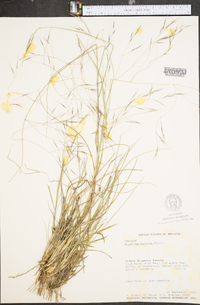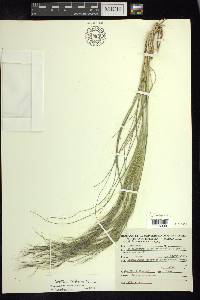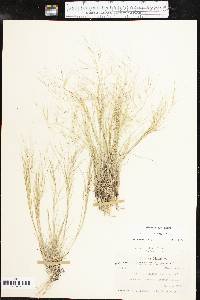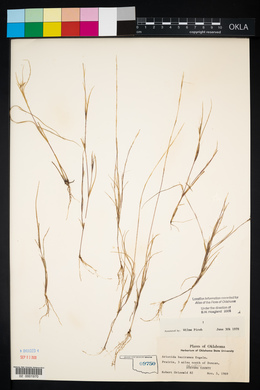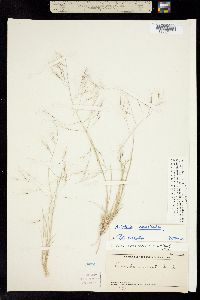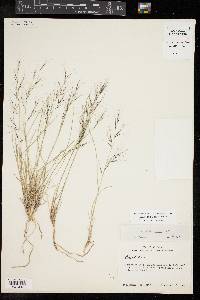
|
|
|
|
Family: Poaceae
Havard's Three-Awn, more...Havard's threeawn, harvard threeawn, Havard threeawn
[Aristida barbata Fourn., moreAristida scova Vasey ex Beal] |
Plants perennial; cespitose. Culms 15-40 cm, slender, usually erect, occasionally decumbent, often tightly clustered into hemispheric clumps, unbranched. Leaves mostly basal; sheaths longer than the internodes, glabrous except at the summit; collars densely pilose; ligules 0.5-1 mm; blades 5-20 cm long, 1-2 mm wide, flat to loosely involute, glabrous. Inflorescences paniculate, 8-18 cm long, 4-12 cm wide, peduncles often flattened and easily broken; rachis nodes glabrous or with straight, less than 0.3 mm hairs; primary branches 2-6 cm, stiffly divaricate to reflexed, with axillary pulvini, usually naked on the lower 1/2; secondary branches usually absent. Spikelets usually divergent, pedicels usually with axillary pulvini. Glumes 8-12 mm, 1-veined, acuminate or awned, awns to 4 mm; calluses about 0.5 mm; lemmas 8-13 mm long, glabrous, smooth or scabrous, terminal 2-3 mm straight or with 1-2 twists, narrowing to 0.1-0.2 mm wide, junction with the awns not evident; awns (7)10-22 mm, not disarticulating at maturity, from almost straight to somewhat curved basally, ascending to divergent distally; lateral awns slightly shorter and thinner than the central awns; anthers 3, 0.8-1 mm. Caryopses 8-10 mm, light brown. 2n = 22. Aristida havardii grows on dry hills and plains in desert grassland to pinyon-juniper zones, and in sandy to rocky ground from the southwestern United States to northern Mexico. It occasionally intergrades with A. divaricata, but that species differs in having more twisted lemma beaks, longer primary branches, well-developed secondary branches, and, usually, appressed spikelets. FNA 2007, Gould 1980 Common Name: Havard's threeawn Duration: Perennial Nativity: Native Lifeform: Graminoid General: Tufted perennial grass with slender, usually erect stems 15-40 cm, occasionally decumbent, often tightly clustered into hemispheric clumps. Vegetative: Leaves mostly basal; sheaths longer than internodes, glabrous except at summit; collars densely pilose; ligules a fringe of fine hairs, 0.5-1 mm; blades 5-20 cm long, 1-2 mm wide, flat to loosely involute, glabrous. Inflorescence: Paniculate inflorescence, 8-18 cm long, 4-12 cm wide, peduncles often flattened and easily broken; rachis nodes glabrous or with straight hairs less than 0.3 mm; primary branches 2-6 cm, stiffly divaricate to reflexed, with axillary pulvini, usually naked on lower half; secondary branches usually absent; spikelets usually divergent, pedicels usually with axillary pulvini; glumes 8-12 mm, 1-veined, acuminate or awned, awns to 4 mm; lemmas 8-13 mm long, glabrous, smooth or scabrous, terminal 2-3 mm straight or with 1-2 twists, narrowing to 0.1-0.2 mm wide just below awns, junction with awns not evident; awns 10-22 mm, not disarticulating, straight to curved basally. Ecology: Found in sandy to rocky soils on dry slopes, plains, often in desert grasslands to the pinon-juniper zones from 4,000-6,000 ft (1219-1829 m); flowers August-October. Distribution: Mostly AZ, NM and n. MX. There are also a handful of collections from TX, and one from se CO. Notes: This perennial three-awn is distinguished by its panicle with stiffly spreading main branches, lack of secondary branches, and spreading spikelets. Similar to A. divaricata, which differs in having longer primary branches, well-developed secondary branches and usually appressed spikelets. Also, A. divaricata has twisted awn columns (lemma beaks), while the awn columns on A. havardii are straight or only twisted once or twice (visible with a hand lens). Ethnobotany: Unknown Etymology: Aristida is from the Latin arista for awn, while havardii is named for Valery Havard (1846-1927), a botanist who collected extensively throughout the US, especially in Texas. Synonyms: Aristida barbata Editor: SBuckley 2010, AHazelton 2015 |

